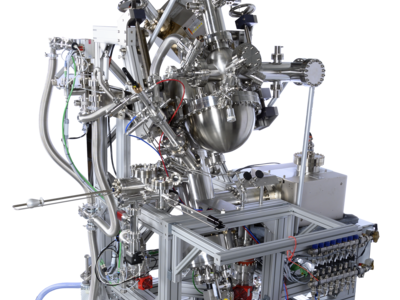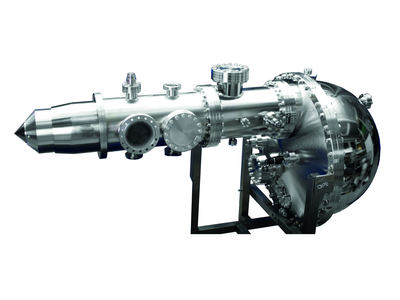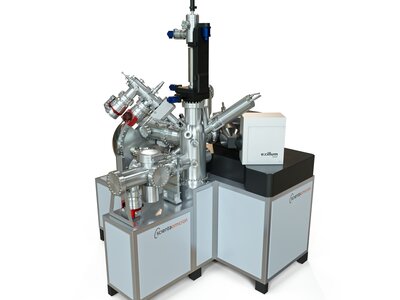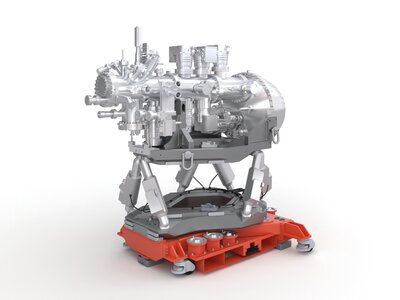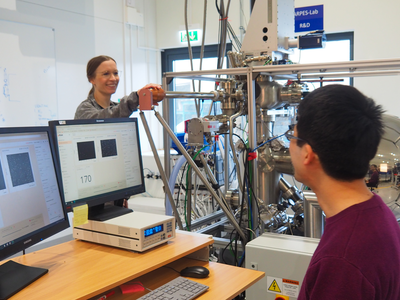Hard X-Ray Photoelectron Spectroscopy (HAXPES)
Hard X-ray photoelectron spectroscopy (HAXPES) utilizes X-rays with higher energies than in conventional XPS, typically in the range of several keV in order to obtain information about material further below the surface. The surface sensitivity in photoelectron spectroscopy is due to the strong interaction of photoelectrons with the other electrons in the solid and the high likelihood of scattering events. By using hard X-rays, e.g. GaKa radiation with 9.25 keV photon energy, photoelectrons with higher velocities are created. Those faster photoelectrons can travel, on average, longer distances within the sample without being scattered. Therefore, also photoelectrons that have been created further below the solid-vacuum interface of the sample do have a certain chance of escaping the solid and being detectable in a photoelectron spectroscopy experiment. In addition, using hard X-rays also gives access to core states of the samples which are not accessible in conventional XPS with AlKa or MgKa irradiation.


